Text



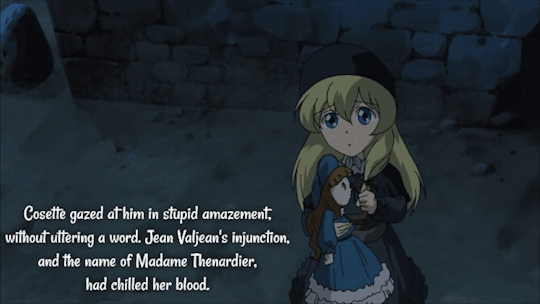


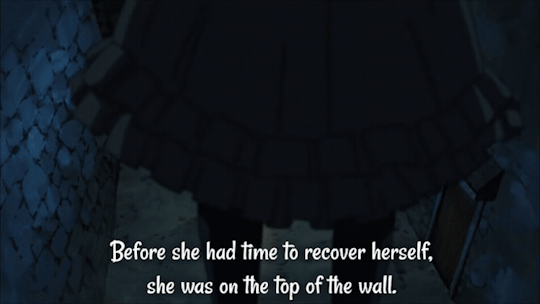


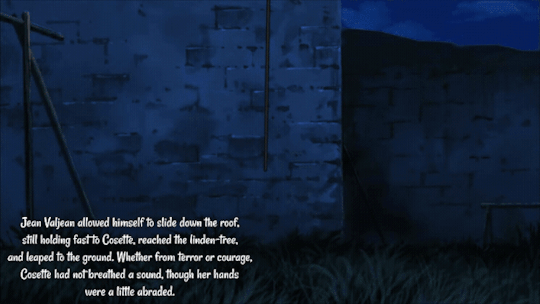
Valjean getting over the wall of Rue Petit-Picpus with Cosette. Volume 2, Book 5, Chapter 5.
Clips from <Il cuore di Cosette>.
#Les miserables#les mis#My Post#Jean Valjean#Cosette#The Lark#Little Mlle. Lanoire#Father and daughter#Owl and Wren#Javert#The Wolf and the Convict#On the Run#The Convent#One of the most iconic Valjean's Action Scenes#The Brick#Il cuore di Cosette#Les Mis Letters
10 notes
·
View notes
Text
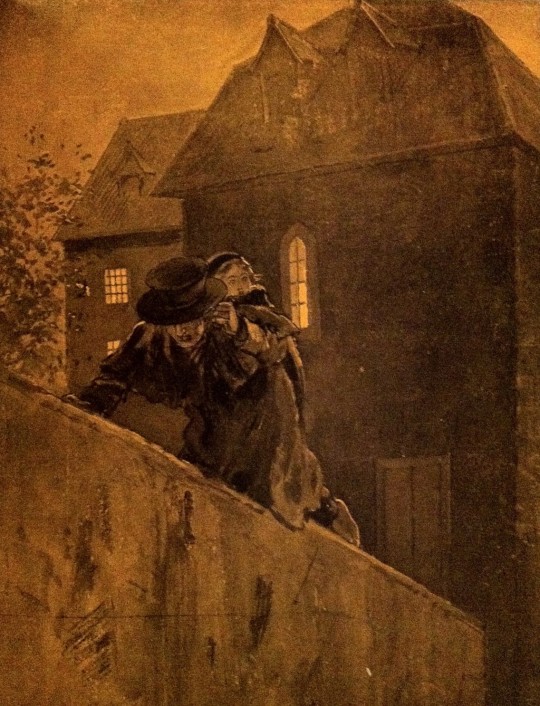
Carlo Chiostri Valjean with Cosette on the wall, escaping the blind alley
#Les miserables#les mis#Jean Valjean#Cosette#The Lark#Little Mlle. Lanoire#On the Run#The Convent#The Brick#Carlo Chiostri#Illustration#Les Mis Letters
29 notes
·
View notes
Text
I just realized! The ship Orion sequence in Les Mis foreshadows how Valjean and Cosette escape the police later on!
When Valjean goes to rescue the sailor who falls over the ship Orion, he helps the sailor ascend back to the mainmast by tying him to a rope and pulling him back up. This is basically the same thing he does to help Cosette ascend over the wall of the convent— he’s even described as tying Cosette with a knot commonly used on ships (“by means of that knot which seafaring men call a “swallow knot.”)
#Les miserables#les mis#Self Reblog#Jean Valjean#Jean le Cric#9430#The Ship Orion#Cosette#The Lark#Little Mlle. Lanoire#Father and daughter#Owl and Wren#On the Run#The Convent#!#The Brick#Meta#Les Mis Letters
99 notes
·
View notes
Text
First ever attempt at sketching Valjean
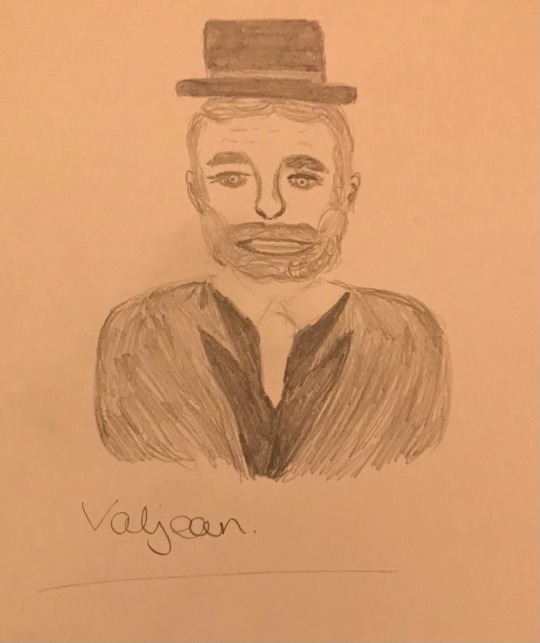
This is messy and I’m not sure how I feel about it. It was done very quickly as I’m off to bed now. College tomorrow.
9 notes
·
View notes
Text

#Les miserables#les mis#Thenardier#Battle of Waterloo#Col. Pontmercy#The Brick#Lynd Ward#Illustration
18 notes
·
View notes
Text
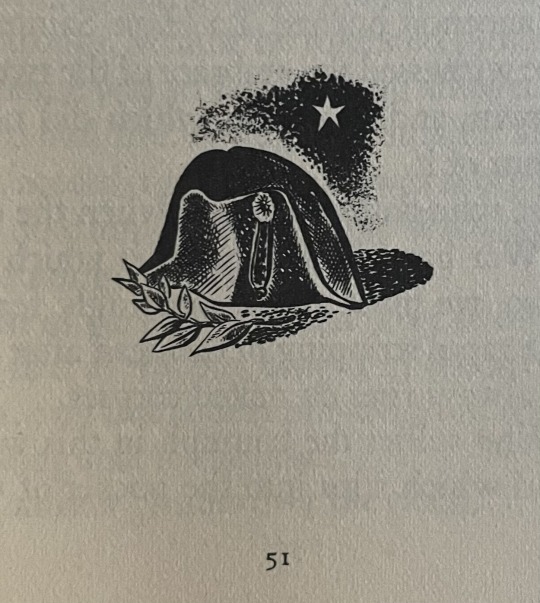
#Les miserables#les mis#Napoleon#Battle of Waterloo#The Fall of Napoleon#The Brick#Lynd Ward#Illustration
16 notes
·
View notes
Text
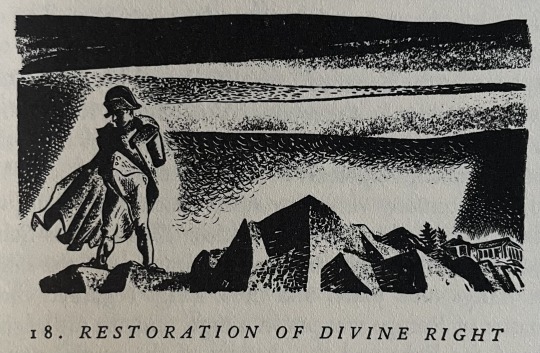
#Les miserables#les mis#Napoleon#Battle of Waterloo#The Fall of Napoleon#The Brick#Lynd Ward#Illustration
13 notes
·
View notes
Text
The one, in which we witness Valjean scaling a wall using only his muscles. But before that, his situation dramatically worsens as he spots a whole platoon of soldiers led by 'Javert’s tall figure,' which Valjean can easily distinguish from a distance. He has only 15 minutes to arrange his escape before they enter the dead-end alley.
Now it becomes clear why Hugo emphasized the detail about not lighting the street lanterns during moonlit nights, as this fact allowed Valjean to use the rope from the lantern to lift Cosette to the wall. Here, we encounter a strikingly beautiful image of Valjean: 'Jean Valjean had this peculiarity, that he carried, as one might say, two beggar’s pouches: in one he kept his saintly thoughts; in the other the redoubtable talents of a convict. He rummaged in one or the other, according to circumstances.' Even though he mostly relies on the talents of a convict in this chapter, his unwillingness to leave Cosette behind is undoubtedly drawn from the pouch containing saintly thoughts.
To silence Cosette, Valjean employs an effective tactic of threatening her with Mme Thénardier — Cosette’s personal monster, akin to how Javert is a personal monster for Valjean. However, such threats are a terrible act in themselves, as they leave Cosette shocked and speechless, a horror that will take its toll in the next chapters. Poor child.
As Valjean and Cosette make their escape, we catch a fleeting glimpse of Javert ordering his soldiers to search the blind alley and rushing into it.
#Les miserables#les mis#Jean Valjean#Cosette#The Lark#Little Mlle. Lanoire#Father and daughter#Owl and Wren#Javert#The Wolf and the Convict#On the Run#The Convent#The Brick#Meta#Les Mis Letters
23 notes
·
View notes
Text





Valjean thinking up How to Climb the Wall. Volume 2, Book 5, Chapter 4.
Clips from <Il cuore di Cosette>.
#Les miserables#les mis#My Post#Jean Valjean#Cosette#The Lark#Little Mlle. Lanoire#Father and daughter#Owl and Wren#Javert#The Wolf and the Convict#On the Run#The Convent#Please give them a Rope!#The Brick#Il cuore di Cosette#Les Mis Letters
17 notes
·
View notes
Text
one thing that really annoys me about a lot of les mis productions is their insistence on making the les amis de l'abc older than they are. i know it's partly a schematics thing with hiring younger actors, but to me so much of the tragedy behind the barricade comes from the fact they were kids. they were college students staring at a future they despised, desperate to change it, and they - and the hope they had for a kinder future - were slaughtered. i mean, hell, the musical talks about it! all the time! javert calls them schoolboys, turning is the mothers of paris staring at corpses of boys who could have been their sons, cosette eponine and marius are kids lost in their first loves. idk it seems like such a minor thing but to me it's so core to what makes this story so devastating
261 notes
·
View notes
Text
Les Mis Canon-era Paris Photographs: Jean Valjean and Cosette’s route to escape Javert, in Pictures!

Jean Valjean's escape through Paris is Victor Hugo's way of mourning the Paris he knew from before his exile, the Paris before the modern renovations.
Hugo wrote Les Mis from exile in Guernsey, at the same time as Paris was undergoing a series of massive renovations. The "Old City" of medieval Paris that Hugo loved was being replaced by the “New City" of Baron Haussman. The dark medieval labyrinth lit by oil lamps was being replaced by modern wide streets and standardized architecture lit by gas lamps. Victor Hugo is nostalgic for the Paris he remembers before his exile-- so Jean Valjean is able to escape Javert using things unique to the Old City. He escapes through a labyrinth of tiny medieval streets in a neighborhood Hugo claims was destroyed during the renovations; he climbs over the convent wall using the rope from an oil lamp, the very oil lamps that were being replaced by the more modern gas lanterns. The dark maze hides him from police surveillance in a way modern streets cannot.
A man named Charles Marville photographed Paris shortly before many (though not all) of the renovations occurred. In this post I'll go through all the different streets mentioned in the Valjean-Javert Paris chase chapters, and provide Marville's photographs whenever they the image has been labeled with the name of the street. Note that there may be some inaccuracies. Some street names changed over time.
Here is a map of what the chase looks like, taken from the book "Paris in the Times of Victor Hugo."
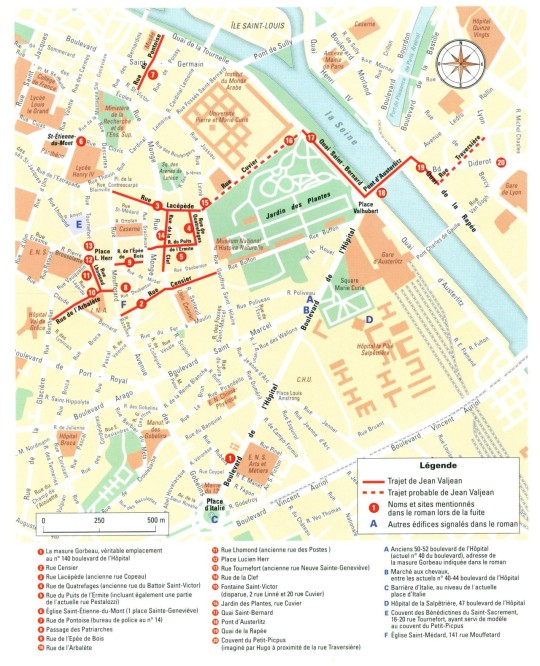
A quick overview: Jean Valjean starts in a slummy half-built suburban area. This area is highly associated with the King; the royal Jardin des Plantes is nearby, and King Louis XVIII often rides by in his carriage during the afternoons. After travelling down a bunch of streets, "zigzagging" back and forth, Jean Valjean decides to cross the Seine over the Bridge of Austerlitz (a bridge named after one of Napoleon's victories.) Then he reaches the areas of the city near the Faubourg Saint Antoine that are more associated with working class rebellion. From there he enters a dark isolated half-built medieval neighborhood near marshes and timberyards, with narrow mazey alleyways, that Hugo mostly made up. Hugo pretends this medieval neighborhood used to exist, but was destroyed like many others during the recent renovations. Now that we've gotten the overview out of the way, let's go more specific!
The chase starts out in "the old quarter of the Marche aux Chevaux." At the time, this was a less inhabited and poorer area of Paris; it's described as basically a slum. Here are some of Marville's photographs :

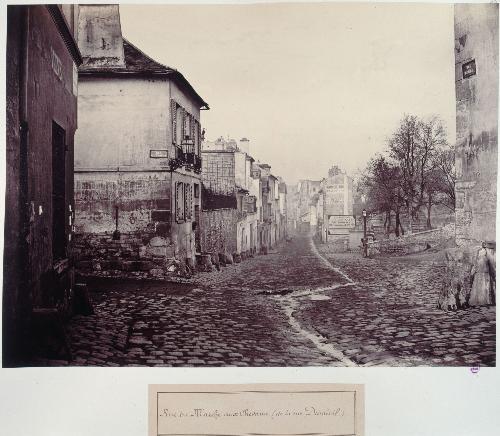
Then we're told "Jean Valjean described many and varied labyrinths in the Mouffetard quarter, which was already asleep, as though the discipline of the Middle Ages and the yoke of the curfew still existed. He combined in various manners, with cunning strategy, the Rue Censier:"
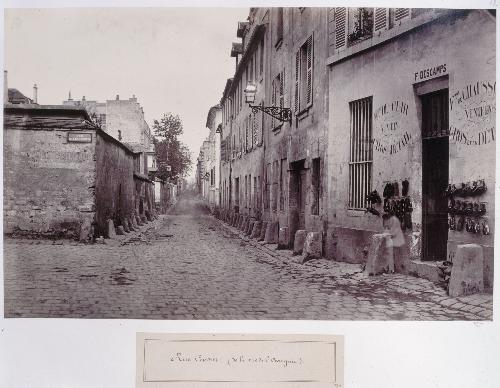
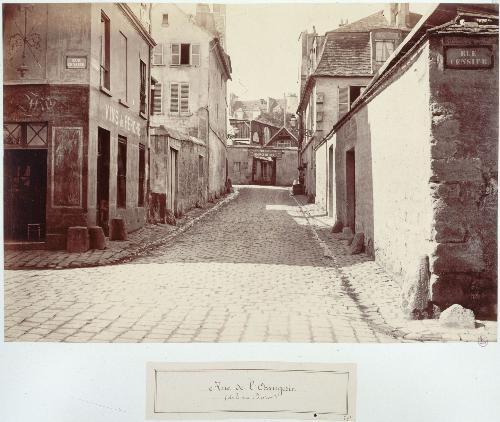


"and the Rue Copeau," (according to the map I linked earlier, the Rue Copeau is now the Rue Lacepede. Here is Marville's pic:)

"the Rue du Battoir-Saint-Victor and the Rue du Puits l’Ermite. There are lodging houses in this locality, but he did not even enter one, finding nothing which suited him. He had no doubt that if any one had chanced to be upon his track, they would have lost it."
"As eleven o’clock struck from Saint-Étienne-du-Mont:" (note: this refers to the church of Saint-Etienne)

"he was traversing the Rue de Pontoise, in front of the office of the commissary of police, situated at No. 14." (Jean Valjean sees Javert and the police following him on this street, because they're visible in the light of the lantern from the police station.)
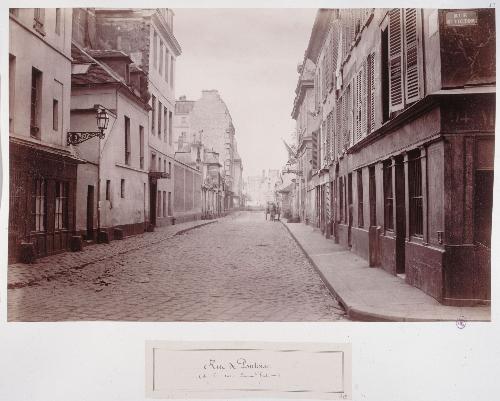
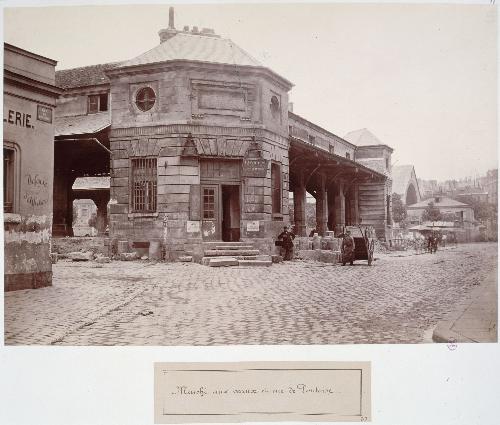
"He took a circuit, turned into the Passage des Patriarches, which was closed on account of the hour,"
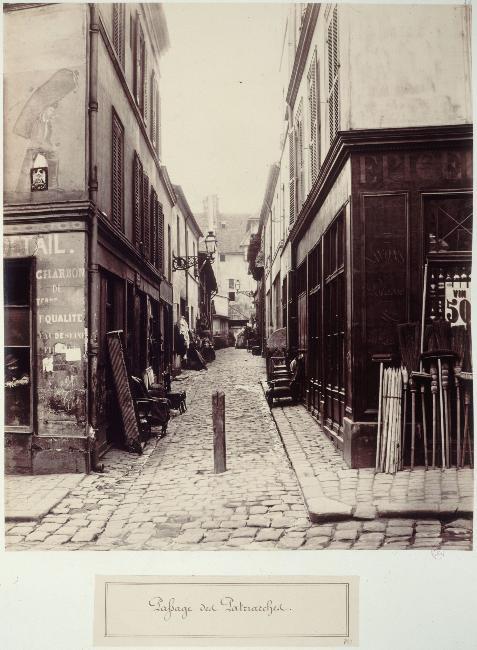
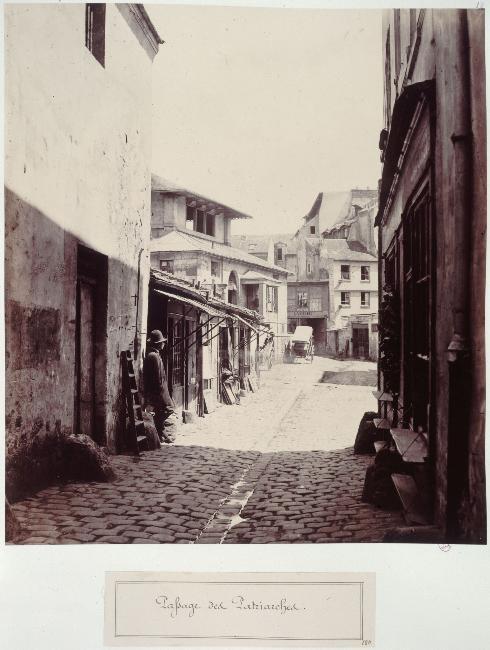
"strode along the Rue de l’Épée-de-Bois

and the Rue de l’Arbalète, and plunged into the Rue des Postes."




"At that time there was a square formed by the intersection of streets, where the College Rollin stands to-day, and where the Rue Neuve-Sainte-Geneviève turns off." (Note: these streets are labeled Montagne-Sainte-Geneviève, but not Neuve-Sainte-Geneviève, so they may be different streets! But I'm putting them here anyway.)
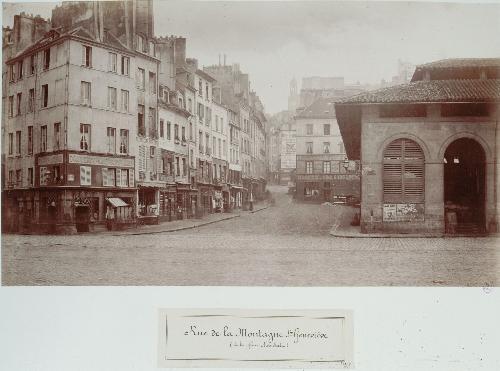


"It is understood, of course, that the Rue Neuve-Sainte-Geneviève is an old street, and that a posting-chaise does not pass through the Rue des Postes once in ten years. In the thirteenth century this Rue des Postes was inhabited by potters, and its real name is Rue des Pots." (Annotation: Hugo's bein silly and making little puns. He's snarkily pointing out the "new saint-genevieve street" is old, and the post street rarely has post-chaises/carriages go through it.)
(Jean Valjean hides in the shadows and watches to see who shows up in this big square intersection of streets. In the moonlight, he recognizes Javert.)
"He slipped from under the gate where he had concealed himself, and went down the Rue des Postes (which I shared a picture of previously), towards the region of the Jardin des Plantes." (Note: the Jardin des Plantes is a royal garden. Here is a modern photo from Wikipedia.)

"He left behind him the Rue de la Clef,

"then the Fountain Saint-Victor, skirted the Jardin des Plantes by the lower streets, and reached the quay. There he turned round. The quay was deserted. The streets were deserted. There was no one behind him. He drew a long breath.
He gained the Pont d’Austerlitz."
(The Pont d'Austerlitz, named after Napoleon's victory at the battle of Austerlitz, is a very famous bridge. Marville has no photographs but here's an 1830 engraving:)

"The bridge once crossed, he perceived some timber-yards on his right. He directed his course thither. In order to reach them, it was necessary to risk himself in a tolerably large unsheltered and illuminated space. He did not hesitate. Those who were on his track had evidently lost the scent, and Jean Valjean believed himself to be out of danger. Hunted, yes; followed, no."
Here's the quai by the pont-au-change-- a different quai, but gives you an idea of what the areas around the Seine often looked like.
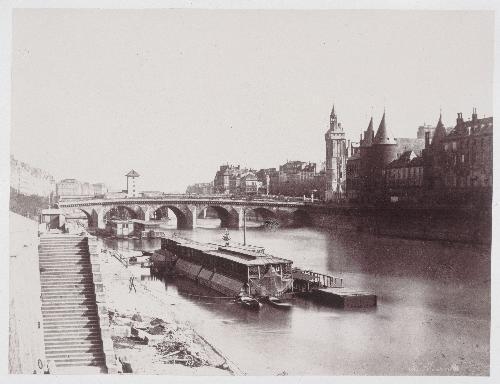
(Then Jean Valjean sees Javert and the other police on the Bridge of Austerlitz, following him. He hurries towards the darker alleys of the city.)
"A little street, the Rue du Chemin-Vert-Saint-Antoine, opened out between two timber-yards enclosed in walls. This street was dark and narrow and seemed made expressly for him."
Here's an abandoned timber-yard-ish looking picture:

But Marville has no photographs of this street. I'd have to double check, but iirc this is the part where Hugo starts to 'make up' more street layouts. I wouldn't be surprised if this street really WAS made expressly for him (meaning Hugo made it up.)
"The point of Paris where Jean Valjean found himself, situated between the Faubourg Saint-Antoine and la Râpée, is one of those which recent improvements have transformed from top to bottom,—resulting in disfigurement according to some, and in a transfiguration according to others. The market-gardens, the timber-yards, and the old buildings have been effaced. To-day, there are brand-new, wide streets, arenas, circuses, hippodromes, railway stations, and a prison, Mazas, there; progress, as the reader sees, with its antidote."
(Here Hugo talks about the Haussman renovations directly, claiming that if his street layouts are "inaccurate" it's because these are some of the Old Medieval Streets that were razed during Paris's recent renovations. He goes on for a while comparing Petit-Picpus to various other areas that were changed during the renovations.)
"Le Petit-Picpus, which, moreover, hardly ever had any existence, and never was more than the outline of a quarter, had nearly the monkish aspect of a Spanish town. The roads were not much paved; the streets were not much built up. (....) Such was this quarter in the last century. The Revolution snubbed it soundly. The republican government demolished and cut through it. Rubbish shoots were established there. Thirty years ago, this quarter was disappearing under the erasing process of new buildings. To-day, it has been utterly blotted out."
The Petit-Picpus, of which no existing plan has preserved a trace, is indicated with sufficient clearness in the plan of 1727, published at Paris by Denis Thierry, Rue Saint-Jacques, opposite the Rue du Plâtre;

and at Lyons, by Jean Girin, Rue Mercière, at the sign of Prudence.
Petit-Picpus had, as we have just mentioned, a Y of streets, formed by the Rue du Chemin-Vert-Saint-Antoine, which spread out in two branches, taking on the left the name of Little Picpus Street, and on the right the name of the Rue Polonceau. The two limbs of the Y were connected at the apex as by a bar; this bar was called Rue Droit-Mur.
The Rue Polonceau ended there; Rue Petit-Picpus passed on, and ascended towards the Lenoir market. A person coming from the Seine reached the extremity of the Rue Polonceau, and had on his right the Rue Droit-Mur, turning abruptly at a right angle, in front of him the wall of that street, and on his right a truncated prolongation of the Rue Droit-Mur, which had no issue and was called the Cul-de-Sac Genrot."
Here is @everyonewasabird's attempt to puzzle this out:

It was here that Jean Valjean stood."
Then Jean Valjean escapes by pulling down an old oil lantern, strung up by ropes. Hugo notes that this would have been "impossible if the streets were lit with gas, the way they would be after the renovations. This picture shows an old oil lamp strung up by ropes:

Finally, Jean Valjean climbs over the wall into the Petit-Picpus convent. This convent is fictional. Hugo pretends it used to exists but is no longer around-- another relic of the early 19th century that has been lost over time.
TLDR:
Jean Valjean's escape through Paris is Hugo way of mourning the Paris he knew from before his exile, the Paris before the modern renovations. To quote Volume 2 Book 5 Chapter 1:
The author of this book, who regrets the necessity of mentioning himself, has been absent from Paris for many years. Paris has been transformed since he quitted it. A new city has arisen, which is, after a fashion, unknown to him. There is no need for him to say that he loves Paris: Paris is his mind’s natal city. In consequence of demolitions and reconstructions, the Paris of his youth, that Paris which he bore away religiously in his memory, is now a Paris of days gone by. He must be permitted to speak of that Paris as though it still existed. It is possible that when the author conducts his readers to a spot and says, “In such a street there stands such and such a house,” neither street nor house will any longer exist in that locality. Readers may verify the facts if they care to take the trouble. For his own part, he is unacquainted with the new Paris, and he writes with the old Paris before his eyes in an illusion which is precious to him. It is a delight to him to dream that there still lingers behind him something of that which he beheld when he was in his own country, and that all has not vanished. So long as you go and come in your native land, you imagine that those streets are a matter of indifference to you; that those windows, those roofs, and those doors are nothing to you; that those walls are strangers to you; that those trees are merely the first encountered haphazard; that those houses, which you do not enter, are useless to you; that the pavements which you tread are merely stones. Later on, when you are no longer there, you perceive that the streets are dear to you; that you miss those roofs, those doors; and that those walls are necessary to you, those trees are well beloved by you; that you entered those houses which you never entered, every day, and that you have left a part of your heart, of your blood, of your soul, in those pavements. All those places which you no longer behold, which you may never behold again, perchance, and whose memory you have cherished, take on a melancholy charm, recur to your mind with the melancholy of an apparition, make the holy land visible to you, and are, so to speak, the very form of France, and you love them; and you call them up as they are, as they were, and you persist in this, and you will submit to no change: for you are attached to the figure of your fatherland as to the face of your mother.
#Les miserables#Les mis#Self Reblog#Jean Valjean#Cosette#The Lark#Little Mlle. Lanoire#Father and daughter#Owl and Wren#Javert#The Wolf and the Convict#On the Run#Paris#The Entire Route!#Places#Historical Pictures#The Brick#Meta#Les Mis Letters
127 notes
·
View notes
Text

So people even cried over the 1935 movie, hmm?
32 notes
·
View notes
Text
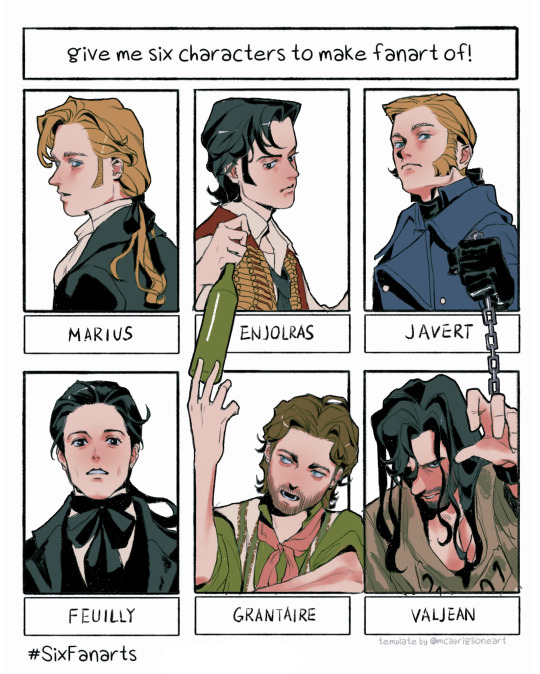
les mis but it's Hadley and Ramin as everyone
#Les miserables#les mis#Hadley Fraser#Ramin Karimloo#Marius#Enjolras#Javert#Feuilly#Grantaire#Jean Valjean#Nice!#The Brick#art
550 notes
·
View notes
Text

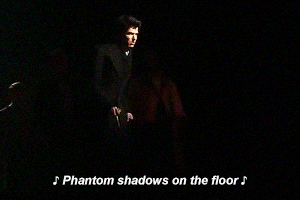


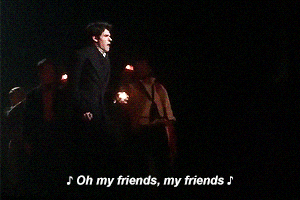
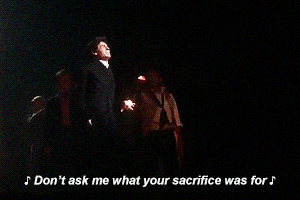


edit challenge vs. @bossuets ♡ round thirteen → favorite les misérables song
↳ empty chairs at empty tables
oh my friends, my friends forgive me
that i live and you are gone
there's a grief that can't be spoken
there's a pain goes on and on
75 notes
·
View notes
Text
Hugo's commitment to providing vivid descriptions of the environment surrounding his characters is remarkable. I'm truly amazed by his attention to spatial awareness. While these abundant details about the streets, buildings, materials, vegetation, and so forth may greatly enhance cinematic imagination, they may also deter some impatient readers.
In this chapter, we witness Jean Valjean's ingenuity in plotting an escape, showcasing his prowess as a master of evasion. However, it's also distressing to see him in such a vulnerable state, akin to a cornered animal. He carefully evaluates the situation, opts for what seems to be the most optimal choice (climbing the house using a pipe), further examines it closely, and ultimately decides to abandon it due to the perceived risks and unrealistic nature. Another option, using his immense strength to break down a door, proves futile as the "door" is revealed to be something else entirely. And so, Valjean’s torments will continue.
#Les miserables#les mis#Jean Valjean#On the Run#The Convent#Ploting the Escape#The Brick#Meta#Les Mis Letters
19 notes
·
View notes
Text

19 notes
·
View notes
Text

18 notes
·
View notes